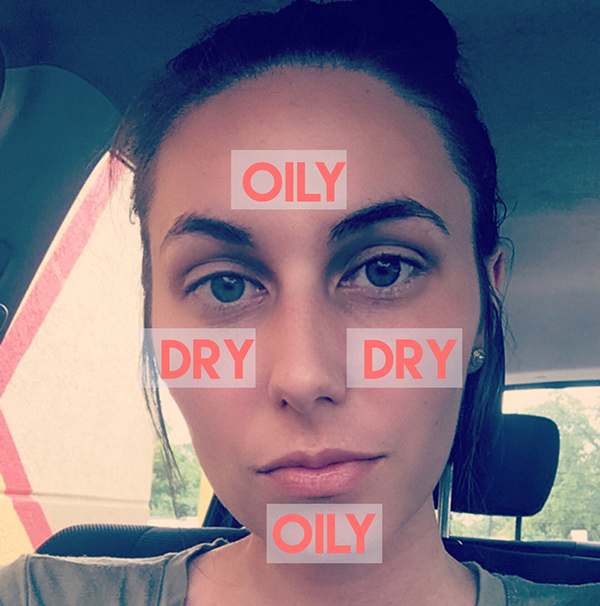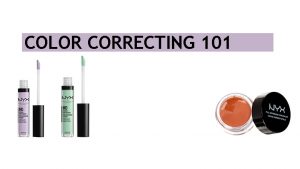One of the first mistakes people make when using lotion and other products on their skin is using a product that doesn’t necessarily fit their skin type. If you are unsure, determining your type is easy. Examine how your skin feels at the end of the day. Look to see if your T-zone is dry, oily, or somewhat normal.

To avoid a skin care disaster, follow these guidelines:
• Oily : Use lotion instead of creams. Find formulas that have exfoliating ingredients, such as lactic glycolic and salicylic acids.
• Dry : Use a cream, especially in the winter weather. There is more oil in a cream, therefore it is a thicker substance and more moisturizing. The greater the oil content, the better absorption through the skin barriers to hydrate the tissue.
• Combination : This is the hardest skin type to find products for. It’s recommended to use lotion with no acids, something bland such as Cetaphil, Cerave, Aveeno, Neutrogena, or Lubriderm.
• Normal : With normal skin simply put a very thin layer of ointment on at night, such as Aquaphor. Adding this will help protect you against the forces of nature.
What’s The Truth About SPF?
There are two types of damaging sun rays: UVA, which is responsible for aging the skin; and UVB, which are responsible for burning it. The SPF number on the bottle only gives a guide for how much UVB protection the product offers. The only way you’ll really know if your sunscreen combats UVA rays is if it states so on the bottle.
Let’s touch on a myth that I’ve heard a lot which is that you don’t have to use a different moisturizer from your sunscreen. Sunscreens already add moisture to your skin because of their ingredients and if you have oily skin, you may be to skip the separate moisturizer. If you have to put both on, apply SPF first and let it settle before you put on your lotion or cream.
TIP: If you use moisturizer in additon to SPF, make sure you apply the SPF first and once it full soaks in then apply your lotion or cream.
Top 3 Tips For Choosing A Daily Facial Moisturizer or Lotion
- Don’t Let Price Fool You – As with any industry, you don’t always get what you pay for. Spending $300 on a tonic promising radiant skin, wrinkle reduction, and annoying blemish control may end up leaving you with nothing more than an adult acne flair up. Instead, pay attention to the ingredients. If you have sensitive skin, look out for fragrance-free and oil-free options. For oilier faces, keep a look out for noncomedogenic (non-clogging) formulas.
- Take Note of The Weather – The time of year that you shop for a daily facial moisturizer can influence what type you should buy. For example, when the weather turns warm, it may be time to lighten up on your daily skincare routine. With a more humid atmosphere and increased perspiration, thick moisturizers may trigger seasonal breakouts. Chilly winter air calls for greater facial skin protein, especially around the lips and eyes.
- Look For Enriched Formulas – It doesn’t take a fancy formula to accurately moisturize and maintain beautiful clear skin. A simple daily facial moisturizer plumps up otherwise dry skin cells to help erase fine lines and smooth your skin’s overall texture. I also would like to quickly go over some of the beneficial additives to look out for. The vitamin A compound retinol has shown the most promise for temporary wrinkle reduction. Synthetic hydroxy acids are commonly found in moisturizers as well; they’re meant to exfoliate dead skin cells and trigger new skin cell growth. Soy compounds may even out skin tone and build collagen fibers that give the skin its smooth texture. Vitamin C is also thought to encourage collagen production, although it doesn’t interact well with vitamin A (which retinol is derived from).
- BONUS TIP- Stay hydrated and that will ensure you’ll have truly healthy skin. Read this post on staying hydrated.
What Is A Water-Based Moisturizer?
If you have used a water based moisturizer I would highly recommend it. My brand of choice is Garnier Moisture Bomb. I talk about it all the time because it works! It keeps my skin hydrated throughout the day and smooth results each day.
There is only one difference between a water based moisturizer and one that is oil based, and it’s clearly visible on the ingredient list. A water-based moisturizer will have water listed as its first ingredient.
The Benefits of Water Based Moisturizer
There are a number of benefits of water-based moisturizer that may make it a good choice for your skin care routine. This type of moisturizer can double as a foundation for makeup, as its texture is much lighter than that of oil-based creams, and will not cause breakouts when worn through the day. This is not to say that all oil-based moisturizers will cause breakouts; in fact, there are many that have tested to be non–comedonal, but water-based moisturizer product will reduce the chances of breakouts even more. This is because, unlike oil, water does not bind itself to the skin as easily, and is inherently less likely to stick inside pores.
Below is the water-based moisturizer that I use.





Comments
Great article! I’ve battled oily screen since I was 16 and now I know why! Thank u so much!
Author
Thank you Aubrey! I’m glad you found my post helpful! 🙂
Pingback: WHAT'S IN MY MAKEUP BAG? | TIFFANY GAMBINO
Pingback: How To Stop Dry Skin From Showing Through Foundation | TIFFANY GAMBINO